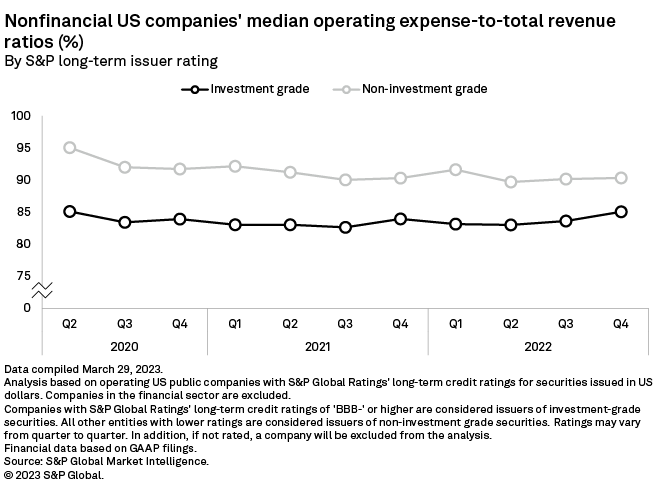How Outsourcing to the Philippines Boosts EBITDA and Enterprise Value
READ MORE >Unlocking Growth: The Strategic Move of US MSPs Outsourcing To The Philippines
Managed service providers (MSPs) are feeling the pressure of doing more with fewer
employees in response to the increasing operational costs in the US. The escalating expenses
related to salaries, benefits, and operational overhead are prompting these MSPs to explore
alternative avenues to maintain competitiveness.
One such strategic move gaining traction is outsourcing to the Philippines, offering a plethora of
benefits that extend beyond just cost savings. Let’s navigate through how outsourcing in the
Philippines can help US MSPs propel their growth in such a competitive market.
Increasing Operational Costs In The United States

Source: S&P Global Market Intelligence
Two-thirds of businesses in the US outsource some of their IT burden to MSPs each year. The
result? The industry will be valued at around $700 billion by the end of this decade. But, on the
other side, labor costs occupy 70% of total business expenditures. This includes salaries,
benefits, payrolls, and related taxes. The rising inflation is adding fuel to the fire.
Many companies are warning that increasing product costs and employee pay hikes in the last
quarter of 2023 will eat into their profits. According to the data from S&P Global Market
Intelligence, the median ratio of operating expenses to total revenue for IT companies in the US
climbed to 85% in the fourth quarter of 2022.
In addition, the shortage of skills has also made finding the right human resource an expensive
bet. The competition for skilled IT professionals has driven salaries to new heights, making it
increasingly difficult for MSPs to retain top talent while staying within budget constraints.
The domino effect of inflation causing demands for an increase in wages which transitions into
lower profits, has become a grappling issue for MSPs as it keeps them from achieving their
revenue targets. Given this, some MSPs are looking to harness the Philippines’ workforce
advantages by outsourcing IT operations.
How Outsourcing To The Philippines Is The Best Alternative
Outsourcing has been there for around two decades. The Philippines is emerging as a hotspot
for outsourcing services. But it’s in this decade that the Philippines has joined the party and has
shown outstanding growth.
It has become one of the most popular outsourcing destinations. The country boasts a highly
qualified and cost-competitive workforce along with strong government support for outsourcing.
In 2011, the outsourcing industry employed around 630,000 Filipinos and generated
approximately $11 billion. Since then, the industry has been flourishing at a rapid pace.
Competitive Labor Costs
One of the most compelling reasons US MSPs are turning to the Philippines is the substantial
cost savings. Skilled IT professionals in the Philippines demand lower salaries compared to their
US counterparts making up for affordable talent shortage solutions. This cost differential allows
MSPs to allocate resources more efficiently, directing funds towards strategic initiatives and
innovation.
Abundant Talent Pool
The Philippines boasts a vast pool of highly educated and English-speaking professionals. The
Philippines is today considered immensely popular for voice-based services (call centers).
However, they cover around 25 different industries and offer valuable knowledge-based
services. With a strong emphasis on education and a robust IT sector, MSPs can tap into a
talent pool that is not only cost-effective but also well-equipped.
Strategic Focus
One of the most common positions MSPs fill from the Philippines is the help desk. Hiring from
the Philippines often results in staffing open roles faster because of the availability of qualified
talent, especially compared to the labor market in North America. This results in less stress and
burnout from your existing staff who is often left holding the bag when employees leave or there
is an influx of new clients or projects. In addition, many MSPs are hiring multiple employees for
the same price as one. In these cases, the results are dramatic. Helpdesk response rates drop
significantly, customer satisfaction increases, and the quality of work improves.
This allows MSPs to redirect their focus and resources toward strategic initiatives that drive
business growth including investments in research and development, innovation, and client
engagement, ultimately gaining a competitive edge in the dynamic technology landscape.
Time Zone Advantage
Of course, your in-house team can’t work 24 hours a day. But, when you have both an in-house
team in the US and an outsourced team in the Philippines, the time zone advantage will let you
offer your services round the clock. This, in turn, will enhance your productivity, reducing
downtimes and propelling overall growth. This is one of the most promising Philippines
outsourcing benefits.
Final Words
Outsourcing to the Philippines is proving to be a game-changer for US MSPs grappling with
escalating costs. The US MSPs outsourcing strategy relies primarily upon securing talented
workers at a lower cost.
Due to low wages, the Philippines is one of the most affordable outsourcing destinations. There
is no denying that these costs will increase to align with industry growth. But the change will be
slow and US-based MSPs can enjoy the financial benefits of outsourcing in the Philippines for
many years to come.




